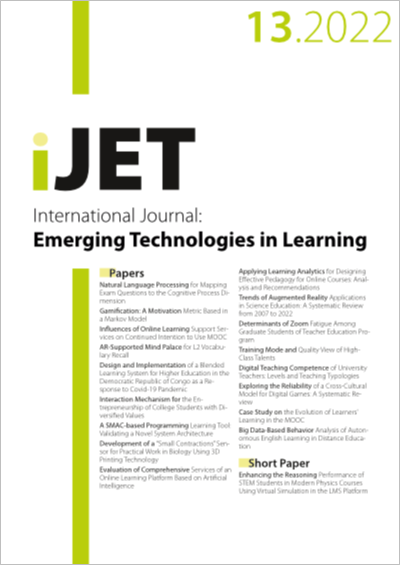Training Mode and Quality View of High-Class Talents
DOI:
https://doi.org/10.3991/ijet.v17i13.32803Keywords:
talent introduction, high-class talent training, training quality, training mode, quality viewAbstract
Building a sound system for assessing the training quality of high-class talents with talent introduction as the target is helpful for effectively analyzing the training mode of high-class talents in colleges and universities and discovering the underlying problems and weak links, thereby further optimizing the current mode, and improving the training level of high-class talents in the region. However, existing papers generally focus on macroscopic research of the training quality of high-class talents, so this paper attempts to study the training mode and quality view of high-class talents under the intervention of talent introduction policy. At first, this paper elaborated on the strategies for adjusting the training mode of high-class talents under the intervention of talent introduction policy, gave a diagram of the research model, and assessed the quality view of colleges and universities for talent training using four selected evaluation indexes, including solid knowledge base, independent research ability, rich practical ability, and sound personality and career outlook. Then, to figure out the changes in the training quality of different high-class talent training modes under the intervention of talent introduction policy, this paper built a high-class talent training quality prediction model based on Gated Recurrent Units (GRU) deep neural network, and gave the statistics of the prediction results of high-class talent training quality in the experiment. At last, this paper compared the differences in the quality view of high-class talent training of different colleges and universities under the intervention of talent introduction policy.
Downloads
Published
How to Cite
Issue
Section
License
Copyright (c) 2022 Nan Zhang (Submitter); Xia Gao, Yufang Wang, Bingna Lou

This work is licensed under a Creative Commons Attribution 4.0 International License.



